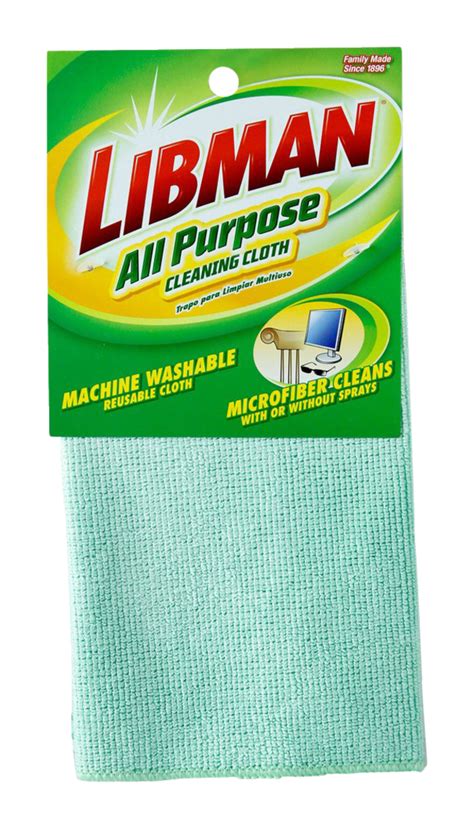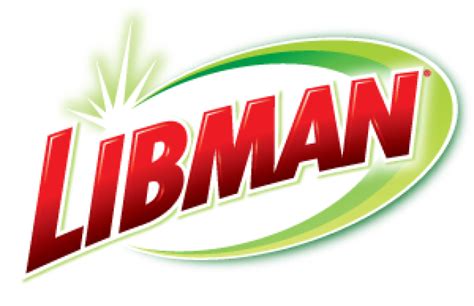What is Libman All-Purpose Dust Cloth?

The Libman All-Purpose Dust Cloth is a must-have for anyone looking to keep their living space clean and dust-free. This cloth is specifically designed to target dust, dander, and other pollutants that can cause allergies and harm the respiratory system.
Made from high-quality microfiber materials, the Libman All-Purpose Dust Cloth is ultra-soft and durable. Its unique texture enables it to trap even the smallest particles found in the air. This makes it an ideal choice for individuals who have sensitivities to allergens or for those looking for a quick and efficient way to clean their homes.
One of the key features of the Libman All-Purpose Dust Cloth is its versatility. It can be used on a wide range of surfaces from tables and countertops to furniture and window blinds. The cloth is also machine washable, making it easy to maintain and reuse.
Using the Libman All-Purpose Dust Cloth is quick and easy. Simply dust the surface you wish to clean and watch as the cloth effortlessly traps and removes the dust. Once you're done cleaning, you can either shake the dust off or toss it in the washing machine for a thorough clean.
Whether you're looking to keep your home clean and healthy or need an effective way to tackle tough cleaning jobs, the Libman All-Purpose Dust Cloth is an excellent choice. With its high-quality construction and unbeatable performance, this dust cloth is sure to become a valuable tool in any cleaning arsenal.
Frequently Asked Questions about libman all-purpose dust cloth
a piece of cloth that is used for removing dust from furniture, books, surfaces, etc.
Dusting Furniture
Microfiber dusters are ideal for dusting delicate items, such as wooden furniture, as they trap dust and debris effectively without scratching the surface. They can also be used to dust electronic devices, such as televisions and computer screens, as they are gentle and do not leave streaks.
For general dusting
“Microfiber, thanks to its microscopically tiny weave, holds ten times more dirt per square inch than its cotton counterparts, so you will collect more dust and keep it from redepositing as you clean the next surface,” says Melissa Homer, chief cleaning officer for MaidPro.
AllerTech® Dust Grabber Electrostatic Dusting Cloths are a durable, high-tech fabric that has a permanent electrostatic surface charge, so dust is picked up without being stirred up. These dry dust grabber rags are especially beneficial for those who suffer from dust allergies!
Oftentimes they're made of a blend of polyester and polyamide or nylon. In short, this means the cloths are made of plastic. The polyester and polyamide are combined in such a way that the fibers are split.
With a dry cloth. Use a wet cloth it's going to turn your dust into glue. Now this doesn't only go for microfiber. This goes for any cloth in general. So you want to dust dry.
Some dust attaches to the duster but many dust particles continue floating in the air and migrate to other places in your home. Some dusters don't even remove all of the dust. Dusting sprays are another common dusting method.
Hand washing is often the most straightforward cleaning method, and with microfiber cloths all you need is water! Run the dirty microfiber cloth under cool or warm (not hot) water, and rub the microfiber between your fingers to help release the dirt and grime. Rinse well and leave to air-dry.
Should you dust with a damp cloth? We at Castle Keepers find dusting with a plain, slightly damp microfiber cloth the best way to remove dust from the home, much superior to dusting with oils or sprays. “Damp dusting” is also much easier than dry dusting and more effective because it catches more dust.
Electrostatic cloths are made of very tiny polyester fibres. They rely on electrostatic forces to lift the dust off a surface; these cloths create a static charge (imagine your pet's hair when you rub a balloon on them) that will attract any dust or particles on the surface and will get stick to them.
Lightly dusty or dirty microfiber cloths can be hand-washed. Hand-Washed: Shake out the fabric outdoors or into a trash bag to release excess dirt. Run a basin of cool or warm water.
We spoke to some experts and a number of theories emerged. The answer could lie in the naturally yellow cotton which originally came from China, according to Professor Beverly Lemire, a lecturer in material culture at the University of Alberta in Canada.
For best results use a damp, clean, microfiber cloth. To dampen the cloth, hold the cloth by a corner and lightly mist it with clean water from a spray bottle. You want the cloth to be damp enough to pick up dust without leaving moisture streaks behind on surfaces.
10 Dusting Tools You Need to Buy Now (Because We All Know That Duster Can't Cut it Alone)
- 01 of 10. Vacuum Cleaner.
- 02 of 10. Feather Duster.
- 03 of 10. Lamb's-Wool Duster.
- 04 of 10. Electrostatic Duster.
- 05 of 10. Microfiber Cloth.
- 06 of 10. Cotton Cloth.
- 07 of 10. Dust Mop.
- 08 of 10. Paintbrush.
Most common are reusable cloths, which must be laundered after every use. When handled correctly, these cloths can last 100 to 1,000 washings. Disposable cloths, on the other hand, are typically pre-saturated with cleaning solution and should be discarded after a single use.
Should you dust with a damp cloth? We at Castle Keepers find dusting with a plain, slightly damp microfiber cloth the best way to remove dust from the home, much superior to dusting with oils or sprays. “Damp dusting” is also much easier than dry dusting and more effective because it catches more dust.















